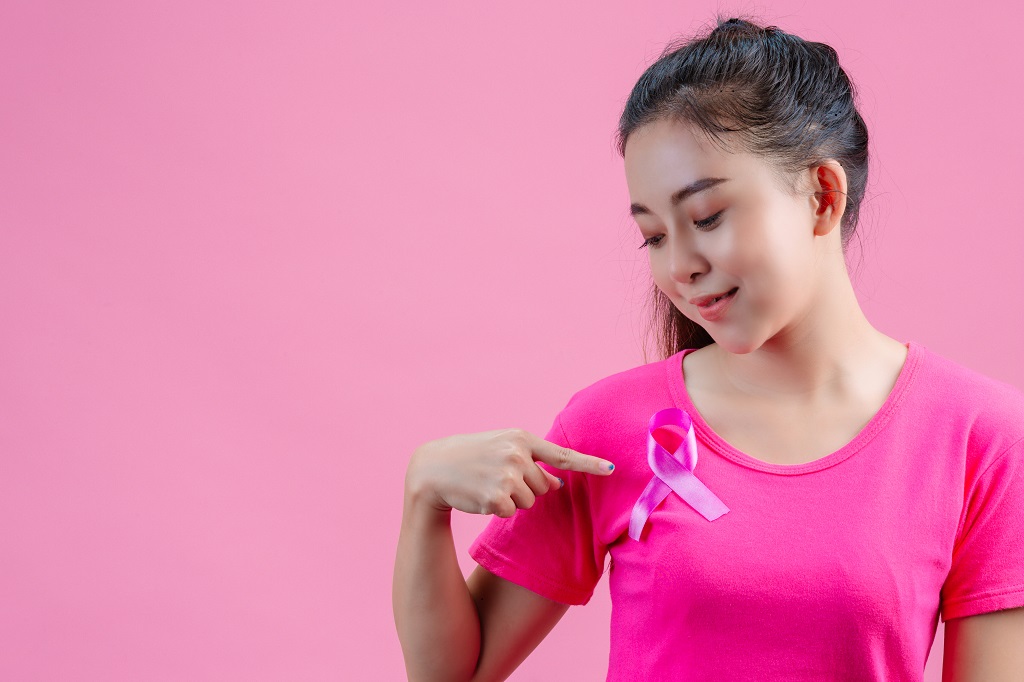According to the Centers for Disease Control and Prevention breast cancer is a health concern that affects people worldwide. So let’s explore the basics of it, including what it, what could increase the chances of getting it, how to find it early and steps to lower the risk.
What is Breast Cancer?
It starts when cells in the breast act strangely and form a lump. Because men and women can get it, but it’s more common in women. It usually begins in parts of the breast that make or carry milk. It forms in the cells of the breasts. After skin cancer, It is the most common cancer diagnosed in women in the United States. It can occur in both men and women, but it’s far more common in women. Substantial support for awareness and research funding has helped create advances in the diagnosis and treatment of it.
What are the Types of Breast Cancer?
There are following types of it, such as:
- Angiosarcoma
- Ductal carcinoma in suit (DCIS)
- Inflammation
- Invasive lobular carcinoma
- Lobular carcinoma in suit (LCIS)
- Male breast cancer
- Paget’s disease of the breast
- Recurrent breast cancer
What are the Stages of Breast Cancer?
Doctors use various methods to determine the stage of cancer, considering factors like tumor size and whether it has spread to lymph nodes or other parts of the body. Breast cancer staging typically includes 0 through 4, with further subcategories each stage.
Stage 0: Stage 0 breast cancer, also known as ductal carcinoma in suit (DCIS), means that cancer cells are found only in the milk ducts of the breast and haven’t spread to nearby tissues.
Stage 1: At stage 1 or breast cancer, the tumor is small, measuring up to 2 centimeters (cm) across. It hasn’t spread to nearby lymph nodes, or there may be small groups of cancer cells in the lymph nodes.
Stage 2: In stage 2 of breast cancer, there are two scenarios, the tumor is 2 centimeters (cm) across and has started spreading to nearby lymph nodes. The tumor is between 2 and 5 cm across but hasn’t spread to the lymph nodes.
Stage 3: At stage 3 breast cancer is up to 5 centimeters (cm) across and has several nearby lymph nodes. Alternatively, the tumor is larger than 5 cm across and has spread to a few nearby lymph nodes.
Stage 4: In stage 4 of it also known as metastatic breast cancer, the cancer has spread from the breast to distant organs in the body, typically the bones, liver, brain, or lungs.
What are the Symptoms of Breast Cancer?
The signs & symptoms of it may include:
- A breast lump or thickening that feels different from the surrounding tissue
- Changes in the size, shapes or appearance of the breast
- Changes to the skin over the breast, such as dimpling
- A newly inverted nipple
- Peeling, scaling, crusting, or flaking of the pigmented area of the skin surrounding the nipple (areola) or breast skin
- Redness or pitting of the skin over your breast, like the skin of an orange
What are the Causes of Breast Cancer?
Doctors know that it occurs when some breast cells begin to grow abnormally. These cells divide more rapidly than healthy cells do and continue to accumulate, forming a lump or mass. Cells may spread through your breast to your lymph nodes or to other parts of your body. It most often begins with cells in the milk-producing ducts. It may also begin in the glandular tissue called lobules or in other cells or tissue within the breast. Researchers have identified hormonal, lifestyle and environmental factors that may increase your risk of it. But it’s not clear why some people who have no risk factors develop cancer, yet other people with risk factors never do. It’s likely that it is caused by a complex interaction of your genetic makeup and your environment.
What are the Risk Factors of Breast Cancer?
A risk factor is anything that makes it more likely you’ll get it. But having one or even several risk factors doesn’t necessarily mean you’ll develop it. Because many women who develop it have no known risk factors other than simply being women. Factors that are associated with an increased risk of it include:
- Being female
- Increasing age
- Genetics
- A personal history of breast condition
- A personal history of it
- A family history of it
- Inherited genes that increase cancer risk
- Radiation exposure
- Obesity
- Beginning your period at a younger age
- Beginning menopause at an older age
- Having your first child at an older age
- Having never been pregnant
- Postmenopausal hormone therapy
- Drinking alcohol
- Dense breast tissues
- Estrogen exposure and breastfeeding
- Body weight
- Race
- Cosmetic implants and breast cancer survival
What is the Diagnosis of Breast Cancer?
Test and procedures used to diagnose it include:
- Breast exams
- Imaging tests
- Biopsy
- Mammogram
- Breast ultrasound
- Removing the sample of breast cell for testing (biopsy)
- Breast magnetic resonance imaging (MRI)
What is the Treatment of Breast Cancer?
Because your doctor determines your treatment options based on your type of it, its stage and grade, size, and whether the cancer cells are sensitive to hormones. Your doctors also consider your overall health and your own preferences. Most women undergo surgery for breast cancer and many also receive additional treatment after surgery, such as chemotherapy, hormone therapy or addition. Chemotherapy might also be used before surgery in certain situations. There are many options for the treatment, and you may feel overwhelmed as you make complex decisions about your treatment. Consider seeking a second opinion from a breast specialist in a breast center or clinic. Talk to other women who have faced the same decision.
Breast cancer surgery:
- Lumpectomy
- Mastectomy
- Sentinel node biopsy
- Radiation therapy
Operations used to treatment include:
- Removing it (lumpectomy)
- Removing the entire breast (mastectomy)
- Removing a limited number of lymph nodes (sentinel node biopsy)
- Removing several lymph nodes (axillary lymph node dissection)
- Removing both breasts
- Radiation therapy
- Chemotherapy
- Hormone therapy
- Targeted therapy drugs
- Immunotherapy
- Supportive (palliative) care
Doctors estimated that about 5 to 10% of it is linked to gene mutations passed through generations of a family. A number of inherited mutated genes that can increase likelihood of breast cancer have been identified. The most well- known are gene 1(BRCA1) and gene 2 (BRCA2), both which significantly increase the risk of both breast and ovarian cancer. So if you have a strong family history of it or other cancers, your doctor may recommend a blood test to help identify specific mutations in BRCA or other genes that are being passed through your family. Consider asking your doctor for a referral to a genetic counselor, who can review your family health history. A genetic counselor can also discuss the benefits, risks and limitations of genetic testing to assist you with shared decision-making.
What is the Prevention of Breast Cancer?
So its risk reduction for women with an average risk, making changes in your daily life may help reduce your risk of it, Include to:
- Ask your doctor about it screening
- Become familiar with your breasts through breast self-exam for breast awareness
- Drinking alcohol in moderation, it at fall
- Exercise most days of the week
- Limit postmenopausal hormone therapy
- Maintain a healthy weight
- Choose a healthy diet
Breast Cancer Risk Reduction for Women with a High Risk:
If your doctor has assessed your family history and determined that you have other factors, such as precancerous breast condition, that increase your risk of it, you may discuss options to reduce your risk, such as:
- Preventive medications (chemoprevention)
- Preventive surgery
Things That Might Increase Breast Cancer Risk:
Certain things can make it more likely for someone to get it. Some we can’t changes, like and age genes, but there are things we can control:
- Age
- Gender
- Family history
- Genetics
- Hormone therapy
- Reproductive factors
Why Finding Breast Cancer Early is Important:
Finding it early makes treating it easier. So regular self-checks exams by doctors, and mammograms help with early detection:
- Self-check
- Doctor exams
- Mammograms
Steps to Lower the Risk:
While some things can’t be changed, a healthy lifestyle might help lower the risk:
FAQs:
What are the symptoms of breast cancer?
- New lump in the breast or underarm
- Thickening or swelling of part of the breast
- Irritation or dimpling of it
- Redness or flaky skin in the nipple area or the breast
- Pulling in of the nipples or pain in the nipple are
What is the blood test for breast cancer?
A blood test also called a liquid biopsy is done to look for ctDNA. Finding ctDNA in the bloodstream also can let doctors know that cancer cells are starting to divide and grow.
Can CBC detect breast cancer?
Although this blood test gives doctors a wide range of important medical information. It can’t detect it. A complete blood count (CBC) is a common part of breast cancer treatment. Doctors typically order a CBC before treatment to get an idea of your baseline blood counts.
Does breast cancer cause high WBC?
Compared with controls non-obese patients with ER+/PR+ it has significantly higher WBC counts regardless of menopausal status ( OR 1.293 95% Cl 1.139_1.363, p<0.001 in premenopausal and OR 1.049 95% Cl 1.019_1.295, p = 0.023 in postmenopausal.
Which breast is usually cancer?
And what it found after analyzing the data was that 50.8% of breast cancers occurred on the left side, while 49.2% occurred on the right.
Related Post:
Advocates want more cancer screening for those in Nova Scotia with dense breasts.





